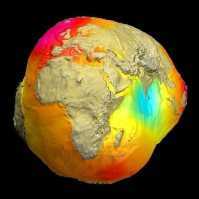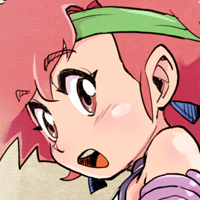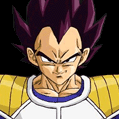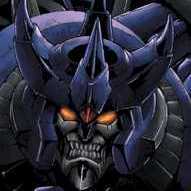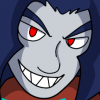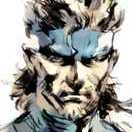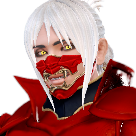About This Group
fghfhfghf descripshin
- What's new in this group
-

[DC] Marvel Vs. Capcom 2 Plus
TheWhiteDevil27 replied to Ryon's topic in Nintendo - Gaming Discussion's Topics
However, the PS2 version is inferior to the Dreamcast and Arcade versions though. -
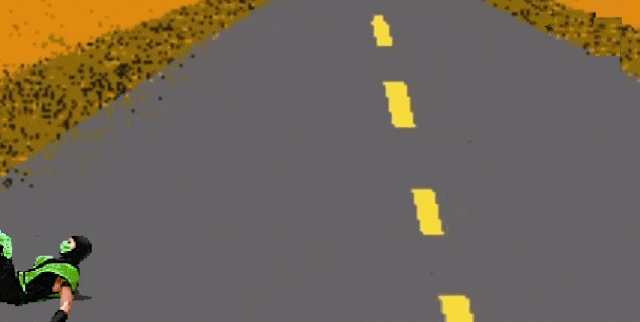
[ARC] Metal Slug Super Vehicle 001
Modo_ekitz replied to Ryon's topic in Nintendo - Gaming Discussion's Topics
So uh.. Is it on mugen? -
[STEAM & PS4] Double Dragon IV Double Dragon IV is a beat 'em up video game in the Double Dragon series. This sequel is a follow-up to the three original Double Dragon games developed by Arc System Works, including the original director, character designer, composer, and programmer. The new sequel's gameplay and graphics are more akin to the ports made for the NES, with several character sprites & sounds taken directly from those titles. After the defeat of the Black Warriors in Double Dragon II, Billy and Jimmy Lee look to spread their Sōsetsuken martial art by establishing dojos around the country. However, they soon face a new threat in a gang called the Renegades, who have teamed up with the Black Warriors to put an end to Billy and Jimmy once and for all. You get a story mode with co-op option (no online!), a 2 player versus duel mode and a survival style tower mode. You can unlock chars in the story mode (for the duels) and in the Tower Mode (for all modes) with a final hidden boss at the end. Either choose normal or retro tracks in the muisc options for the game. Looks fun to me... Official website
-
Flood is 1990 platform game developed by Bullfrog Productions, published for the Amiga & Atari ST by Electronic Arts. The game involves completing the levels as fast as possible by collecting all the litter and find the exit before the rising waters throughout the game drown your Quiffy character. 'Quiffy' is your player controlled character, who is the last of his race of small green creatures and can walk on walls and ceilings. He lives underground in a series of sewers and tunnels. His mission is to reach the surface by navigating all the sewers, whilst they are slowly flooding. You start each level with no waepon, but Quiffy can pick up any of five available ones, like Grenades or a Flamethrower. AMIGA Longplay From the Manual: Quiffy is a slightly overweighted wee green Blobbie who lives in secret caverns deep underground, feeding on the trash left behind by an ancient and enigmatic civilization. Unfortunately, these caverns haven been overrun with nasty creatures like the Psycho Teddies and Quiffy's distant cousins, the Bulbous Headed Vong. These unlovely creatures have waged a vicious war on Quiffy's kind and he is now in the unfortunate position of being the last surviving member of his race. Indeed, you can see the luckless participants of this genocidal war stretched throughout the interconnected caverns. If all that wasn't bad enough, the mysterious taps of wrath have suddenly ended their years of arid indifference and have started to cascade vast quantities of water into the caverns. Because Quiffy cannot breathe under water, he has decided that enough is enough and has resolved to make his way to the surface and escape the creeping doom of the flood. What you have to do. --------------------------- The idea of Flood is very simple, within each level Quiffy must explore the caverns that make up that level and collect all the trash that is not nailed down. Once he has collected all the trash, then he can use the END OF LEVEL TELEPORTER and proceed to the next level. In addition to the 36 normal levels, Quiffy must also negotiate his way through a further 6 levels that the devilish Vong have built, making 42 in all! There are two types of teleporter which outwardly look identical: the END OF LEVEL TELEPORTER and the IN LEVEL TELEPORTER. The END OF LEVEL TELEPORTER takes Quiffy to the next level once he has collected all the trash on the cuurent level. The IN LEVEL TELEPORTER (which can be invisble) are linked in pairs and just move you to the linked IN LEVEL TELEPORTER, which will be at a different location within the current level. Tha game was no commercial success, but the water properties was quite advanced for a computer game of its time. I enjoed the game back in the days a lot.
-
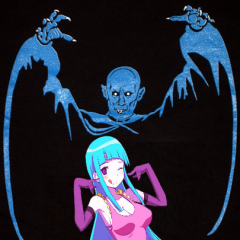
[VAR] It Came from the Desert
Mʀ. Sтᴇαl-Yoᴜя-Wαεfυ replied to Staubhold's topic in Nintendo - Gaming Discussion's Topics
Someone turned Them! into a video game! I wish someone with talent would redo it into a series. Best giant insect war story still today. Aliens is close 2nd. -
It Came from the Desert is a 1989 action-adventure game by Cinemaware. It was originally released for the Amiga, then ported to MS-DOS. Two console versions, for the Sega Genesis/Mega Drive (unreleased) and TurboGrafx-16, are distinctly different from the versions released for computer platforms, in terms of gameplay and presentation. Like most of Cinemaware's titles, It Came From the Desert takes its inspiration from Hollywood. This game is inspired by dozens of 1950s "B" movies, especially the 1954 mutant-ant classic Them!. It Came From The Desert is one of Cinemaware's finest creations that will challenge both your brain and your brawn, since it is a mixture between arcade and adventure. Amiga Longplay As the town's resident geologist, your goal is to discover the source of all the strange occurances happening in Lizard Breath. Gameplay centers around choosing what you want to do by selecting an option on the multiple choice screens that pop up. There are several buildings in town, as well as farms, mines, an airport, and even a drive-in theatre. Once your investigation begins, you soon realize there are large, mutant ants roaming around the outskirts of town. These ants are dangerous, and you must fight them to survive with a handgun, an apparently infinite amount of grenades, and bug spray used in airborne attack. It Came From the Desert can be considered real-time. Waiting, sleeping (at home or in a hospital bed) and driving around consumes time. As it turns out, the player has a fixed amount of in-game days (15 days, ending with June 15) to succeed. If the player fails by this date, the ants will mate and spread, which results in a gloomy ending. To reach a good ending, the player must locate the ant colony and kill the queen ant. While play might seem limited at first, there are dozens (possibly hundreds) of variations in the game, depending on the choices you make. Not only that, but there are many opportunities to find yourself in a fight, either with the ants, or with some of the not-so-friendly folk of Lizard Breath. You can wind up in a knife fight, or being chased across the desert by several hundred giant ants, or even playing chicken on the highway with the local greaser punks. With great graphics, rocking soundtrack, and tons of atmosphere, this is a must play for all action/adventure fans. I loved the game back in the days and had several playthroughs.
-
[PC] Living Hell (a Splatterhouse re-make): Living Hell is a Splatterhouse re-make by this web site: http://www.nlkgames.com/?section=game&id=112 If you don't know about or have forgotten Splatterhouse, then you must pay a visit to this web site to get to know about or be reminded of, the awesome horror-movie-alike action video game classic: http://www.hardcoregaming101.net/splatterhouse/splatterhouse.htm P.S. My Splatterhouse the arcade game experience was short, I haven't managed to finish Splatterhouse the arcade game yet because before my goal the arcade machine has already been moved/discarded! Then all my Splatterhouse game experience has long been based on using game emulators on my PC. Thanks to MAME, I could finish my unfinished Splatterhouse game once and for all! I just downloaded this Splatterhouse re-make not long ago and I will try to play it during my leisure. I like Splatterhouse so much that I even once mugenized the final boss of the arcade game:
-
A Visit to Video Game History Museum at GDC 2013 & 2014 (by a Taiwanese player, not me, Borewood2013....I did the Chinese-to-English translation for you) ---------------------------------------------------------------------------------------------------------------------------- Video Game History Museum at GDC 2013 This year of 2013 is my second time visiting the GDC (Game Developers Conference. When I am on the Moscone Center floor, that rest area from last year has become a mini-showroom! Video Game History Museum has been exhibited a few times during the Classic Gaming Expo or Electronic Entertainment Expo (E3). Every exhibition uses different themes and shows different items. This 2013 GDC consists of regions of a few themes - two (2) main video game console booths, an accessories booth, an arcade machine booth, and family games booth. The whole area of GDC is not huge, yet every exhibited item is not from half-assed collectors. Most visitors are gamers with quite a few years of gaming experience, so only the uncommon collections can attract their eyeballs. The first point of interest is the ATARI 2600 rest area. No need to repeat ATARI 2600 history here. The ATARI 2600 rest area decoration is full of the super classic wooden-framed T.V. set, on top of that there are some old black music records, sitting on the couch and looking at the ATARI 2600 games on the classic T.V. screen can really give me a 1970-1980s feel. Some ATARI 2600 video game strategy guides! "How to win at E.T. The Video Game"....come on, when you bought this ATARI 2600 game you were already a loser! How to win? LOL To the opposite side of the ATARI 2600 rest area, there is a small booth that displays ATARI related products. There are some never-published machine prototype, and some merit stands ATARI obtained. A never-published ATARI "Game Brain" machine! Most games it supports are games like "Pong!". It is said that this was a product that uses some recycled or reused chips that have never made it to the market. Two (2) ATARI CX-2000 prototype machines in different colors. It is said to be a cheaper version of a modified ATARI 2600. Again, it has never made it the the market. This keyboard was made for ATARI 7800. During the days when there was not much difference between PCs and video game machines, almost every video game machine wanted to add such support. Again, most have never made it to the market. I (the Taiwanese) don't have much love for ATARI. So I just browse ATARI area without details. Yet, I won't miss some very cool and rare ATARI items - the "Mind Link" accessory. "Mind Link" is an extra controller for ATARI 2600/7800. The player can wear it and use his/her brain waves to play games..........NOT! This accessory just tries to sense your forehead muscle and use the signal to act like a controller. In those times this was considered quite revolutionary! Yet, its fate was just as same as other unpublished products. A non-ATARI item in the ATARI area! A PSX "Gense Kyokou Seirei Kidoudan -Elemental Gearbolt" deluxe box! It includes the game CD and the golden GunCon laser gun, golden memory card. It is said that this deluxe box was manufactured for video contests usage only. So it may be the rarest PSX product to get because of its unbelievable price and extreme rarity. Another non-ATARI item in the ATARI area! An X-Band prototype and its keyboard. X-Band was used for online gaming when there was only telephone modems. Nintendo SFC/SNES and Sega MD/Genesis also had some X-Band support. Sega Saturn SS online feature also made use of X-Band. Oh that Sega MD/Genesis prototype was made for online chat only and its publishing was cancelled. Speaking of Sega, I (the Taiwanese) reach the Sega area! Start with a small booth. Most items in this small booth have already been made it to the market. Only a very few rarity like the "Twin Stick" for "Virtual-On". The "Twin Stick" is not uncommon in Japan or Taiwan, yet, it is quite uncommon to most Europeans and Americans. In this small booth there is a Sega MD/Genesis and Sega CD development station. "Treamcast" is an unlicensed made-in-China Dreamcast+LCD monitor-in-one product. The idea was probably borrowed from PSOne. Like most other unlicensed modified Dreamcast machines, "Treamcast" was warned by Sega's legal action. Thus, not many "Treamcast" were going to the market. Dreamcast collectors might see it as a rare collection item. Next, a Sega CDX - a combination of Sega MD/Genesis and Sega CD/normal CD player. What an ambitious product in those times! I (the Taiwanese) bet this thing can cost a lot these days. Now the legendary Sega machine in mystery! The Sega Neptune! In those times Sega used planet names for product code names. "Mars" was intended for Sega MD/Genesis' hardware expansion 32X. "Saturn" was used for the nowadays' Sega Saturn SS. And this "Neptune" was intended for a fusion of Sega MD/Genesis and 32X. Unfortunately the result of 32X was not good and at the same time Sega Saturn SS was already published to the market, the "Neptune" project had been halted! Now this particular Sega Neptune in this small booth.....is it a real working machine prototype, or just an empty case? Just wondering...... Next to the small booth there is an accessories section. Some Sega stuff and some Atari stuff. Old-style cardboard paper boxed game cartridges. Some paper stand of "Sonic Adventure DX" and "Power Stone". A "Sonic 3" T-shirt too. A "NiGHTS into Dreams" cloth-made item.......not sure whether it is a T-shirt or a poster... An UK Arsenal soccer T-shirt with a Dreamcast pattern! During the years of 1999-2001 Sega was UK Arsenal's main sponsor. A golden "Virtua Fighter" sweat shirt! This was a game contest prize when Sega Saturn SS was firstly made it to the market. Some more game related gift items and products for promotion purpose. Some "Sonic" badges and some game cartridges prototype. A "Propeller Arena" game CD for Dreamcast! It was an unfortunate product because at times of its completion, the 911 incident happened and this plane-vs-plane shooting game release had been cancelled! Wonder whether it will see the light by XBLA/PSN or not? A "Virtua Racing" game cartridge prototype! This is the only one making use of SVP chip to achieve 3D effect for Sega MD/Genesis. Some strange-looking accessories here. A "Pico" for chidren learning, a "Pods" toy that senses lights and sounds, and even a special box for keeping game controllers. The last one are an infrared red light sensor, and an "Activator" that made use of body movement control idea, which was published prior to nowadays' Kinect. The idea and technology in those times were okay, yet the application level was having some root issues...... A Dreamcast bag, a "Space Channel 5" lunch box, and a "Sonic" Party banner here. Some early game badges, pins, and stickers here. An "IR 7000" communicator! It is said to be an advanced computer and low-level PDA at the same time. It has a calculator, phone book list, and an infrared red light communicator for data transfer of text-only chat and simple versus games. Yet, this "IR 7000" communicator was just a product Sega bought from Casio. You know Casio has been producing many similar handheld products. Then here is a very cool Sega "Saturn Training Materials" booklet! And some video tapes too! I (the Taiwanese) take a brief look at some pages but I don't really understand much because it is so technical! A "Samba de Amigo" musical controller! On top of it there are a couple of 1980s' 7-eleven frozen slush cups with Sega pattern. It is kind of amazing to know that even some old cups like those can be kept for about 30 years. Sega Master System SMS' sports pad and 3D glasses here. Some Atari pins here. Americans seem to like pins very much. Pins keeps to be the most common gift in GDC. Many visitors' back-packs have pins like these. More pins and other promotional gifts. There are some particular video game machines besides the side pillars of this area. A "Puppy Pong" machine.........it is indeed just a "Pong!" machine inside. Adding some puppy decoration is for attract children. A "Dr. Pong"? For doctors only? Manufactured by Fuji, the "CX-1" combines a Dreamcast, a keyboard, a "Dream Eye" camera, a T.V. monitor and it can load Dreamcast games as well as be used as an online communication platform. This product does gives a futuristic feel in those times. Does the back of the "CX-1" look like an alien or "Sonic"? Besides the "CX-1" there is a "HKT-01" which was used for Dreamcast development. A dissected Dreamcast joypad here. In the middle there is a Sega test-drive booth! To the Americans, Sega home consoles started with Sega Master System SMS. SG-1000, SG-1000II, and Sega Mark-3 have never made it to the USA market. Yet, Sega Master System SMS was still a modified Sega Mark-3. Sega Genesis - the machine that helped Sega a lot in locating its recognition in the USA, as well as the not-so-successful Sega-CD. Look, the Sega Genesis is showing the popular "Michael Jackson's Moonwalker" game. Actually I (the Taiwanese) quite like the Sega 32X. But it had some serious issues that might have brought much negative influence to Sega's home game console development. This "Sega Genesis 3" is not common in Taiwan. A Sega Saturn SS here. The US version of SS has a joypad that doesn't feel comfortable and a game CD case with not-so-admirable case design. Dreamcast and Game Gear GG are very common Sega game consoles. The outter designs of both don't have much difference. The litte bit uncommon one is the Sega Nomad! This is a portable Sega Genesis, and is about the same size of a Game Gear GG. The screen looks a bit better than that of a Game Gear GG. Yet it still suffers from some screen flickering and blurriness. Of course, it is pointless to compare it with today's standard. Like in the Atari area, some non-Sega item is placed in the Sega booths. A Bandai's "Vectrex" machine. This "Vectrex" machine supports vector-based games only. In those times 2D games couldn't do any vectors at all. so it made the "Vectrex" machine quite unique. Hey this "Vectrex" machine was made in Taiwan! The next area is the arcade machines area. I only pay attention to some particular machines there. An old "Donkey Kong" arcade machine! So old that its screen is all messed up. Sega Turbo! Look at the deluxe "Sega Turbo" driving interior! A very cool TRON arcade machine. Asteroids arcade machine. Although the photograph doesn't show, its use of screen after images and flood light is not found in even today's LCD monitor. On the other side there is a Sega Saturn SS test-drive arcade machine. But there is no TV monitor inside that. A Sega MD/Genesis test-drive arcade machine. This time there is no console inside that. Lastly, the Sega game theme area. Since all Sega game consoles are located in the previous booths, there is none in here. Rather, only a T.V. is put here to show some Sega advertisements. A table of many retro Sega magazines! A "Jet Set Radio" Sega poster on the wall! Video Game History Museum at GDC 2014 Last year I (the Taiwanese) came across with the "Video Game History Museum" at GDC. This year the "Video Game History Museum" is still there! Last year the "Video Game History Museum" which about Atari and Sega. This year it is Nintendo's turn! Start from the display booth which shows Nintendo's early products. Before the wide popularity of the video games, Nintendo was already existing. During those times Nintendo started with Hanafuda/Hanakaruta, and then expanded its business with a variety of playing cards, props, and toys. This item here is a Roulette made in 1970 and it was aimed to the USA market. A unique mini-Roulette. It has the Las Vegas TV station KVVU/5 label. It might be Las Vegas' related promotional gift. In the year of 1967, Nintendo published a baseball pitching machine called "Slugger Mate". It was also aimed to the USA market. A Nintendo toy set in the same year of 1967! "Ultra Hand" was quite popular in those times. It is said that there was a record-breaking sales (more than 1,000,000 pieces sold). Then, Nintendo's video gaming business began! The 8-bit Famicom wasn't the first Nintendo's video game console. The "Color TV-Game 6" published in the year of 1977 was the first one! There was also a deluxe version called "Color TV-Game 15". In contrast to "Color TV-Game 6", "Color TV-Game 15" supported many more games. The controllers could be separated from the main machine body. Yet, it is said that both machines had the same output power, and both had the same number of games, just that some games were hidden in "Color TV-Game 6", while "Color TV-Game 15" showed all the games. The differences in prices and publish dates were also intended. Businessmen are generally sly! Game contents were mainly based on "Pong!". They even called "1-player" and "2-player" with the same game, as two (2) different games! The third in the "Color TV-Game" series was called "Racing 112". The look of it highly suggests it was a racing game machine. What did the number 112 mean? Were there 112 different racing games? Not! In fact it means there were 112 different speeds, road widths, and road obstacles, as well as number of players. Those switches could result in 112 different combinations, yet the game available was only one (1). The fourth in the "Color TV-Game" series was called "ブロック崩し". It is believed to be a game like nowadays' Arkanoid by Taito. Perhaps the previous products was using exaggerated number like 112, this "ブロック崩し" didn't have any number label. The first three (3) in the "Color TV-Game" series were co-operation projects with Mitsubishi. "ブロック崩し" was the first product developed solely by Nintendo. The shape and design were done by Miyamoto Shigeru, the "Mario's Father". The last in the "Color TV-Game" series was the "Computer TV Game" machine. That machine was about Reversi/Othello chess game. It was so rare that even in GDC here is no sign of it. This red T.V. set item has no description. Just with a Nintendo label near its top. After some research, I (the Taiwanese) got to know this has been used in video game stores for promotion purpose. The slot below the screen can be plugged in with a game cartridge.........NOT! That is a VCD slot actually! This red T.V. set item is believed to be a product during the Nintendo 64 age. Another item without description! This one looks like a Nintendo Entertainment System NES. The "AVS" label might suggests the NES' prototype "Advanced Video System"? Still incorrect. After another research, I (the Taiwanese) got to know this item belongs to RetroZone, which is a shop specializing in video game modifications. This particular one was RetroZone's HDMI version of NES. Just wondering why this kind of unofficial new hardware is put in GDC here.......?_? The next display booth shows "Super Mario Bros.", "Duck Hunt", "Ice Climber",...etc....nothing special..... Then I (the Taiwanese) look closely......there is a "Paid/Thank You" label on these boxes. Something not normal. The hint is given by the big white label that says "Nintendo v. Magnavox" and some unknown code. What does it mean? The answer is, these were the evidence Magnavox used when Magnavox had some lawsuit with Nintendo! About that lawsuit result, Nintendo was the loser and Magnavox was the winner. I (the Taiwanese) don't understand those legal English terms, so I am not able to tell you about what their lawsuit was about (*run away*). This is the classic Mother 2 (EarthBound in USA) RPG game box. In the second-hand market it has high value. In Japan the local version outnumbered the USA version. It then also had Gameboy Advance GBA version, later on even Wii Virtual Console had it too. As a result, the price was not increasingly high in Japan. Yet, in USA, not only there was no GBA version, but also there was no Wii VC version as well. For long Americans could play the English version only on their Super Nintendo SNES. With extra large packaging and included strategy guide, this English version quickly became American SNES players' wanted gem. A second-hand EarthBound in good condition can cost up to US$450 and even more! By the way, EarthBound was finally ported to Wii U in the year of 2013. Now here it comes a never-been-seen item. It has a "QSound" label. Might it suggest some similar technology used in Capcom CPS boards? That pair of speakers and included game controller might suggest "QSound" was once used on both Sega MD/Genesis and NES. That "QSound" accessory needs a huge "QSound" main machine. So huge like an XBOX One? Look closely at the audio hole on top of the game cartridges. My guess is, it has to be connected to the game controller set, and then combine with a T.V. set speakers to create some 3D Premium Surround Sound effect. Since this product has never been made it to the market, the actual feature and usage are unknown. The next Nintendo display booth. Let's see what treasure I (the Taiwanese) can find. Everybody knows of the most famous 8-bit Famicom (Family Computer) system. Nowadays players outside Japan can get a second-hand one without major problem. (The 8-bit Famicom is my favorite video game console! - by Borewood2013, not by the Taiwanese) Famicom Disk System (FDS), the disk system for the Famicom. It was intended to try to solve ROM game cartridge memory issue. Out of expectation the disk memory capacity lost to that of ROM. Games like "The Legend of Zelda" and "Castlevania" were in forms of game cartridge when sold to the overseas, and later on in Japan too. Long before Virtual Boy and 3DS, Famicom already made use of 3D technology. Video gaming industry began 3D technology challenge in its early times. Moreover, this kind of challenge repeated every one (1) to two (2) eras. The challenge during the 2009-2012 eras was said to be a total failure. This Famicom "3D System" was sold in Japan only. It made use of shutter-type 3D glasses. Only seven (7) games were available. When ported to the USA, they replaced the shutter-type way with a even worse red-blue 3D glasses. During the Nintendo 64 times, another disk system called "64DD" was published. It is said that it was intended to try to solve the ROM game cartridge memory issue like in the Famicom case. Nonetheless, "64DD" development was full of obstacles. Since the year of 1996 the publish date was delayed to the year of 1999. The timing was wrong and players didn't care much anymore. The networking accessory "RANDNET" service died with the short life of "64DD" as a predictable result. Again some classic FC/NES games. Spot the point of interest yet? The point of interest indeed is the golden "Nintendo World Championship 1990" game cartridge! The game content was about "Nintendo World Championship 1990" games -- some "Super Mario Bros.", some "Rad Racer", and some "Tetris". The players have to get the highest scores within a time limit. After the games, this golden game cartridge was given to the winner. Only ninety (90) such golden game cartridges were manufactured. Later on Nintendo made 26 even more rare ones, for the Nintendo Power magazines. For now this might be the rarest FC/NES game game cartridge and its second-hand value can be estimated up to US$10,000! Here comes the USA version of Famicom, the commonly known NES! It includes a laser gun and "Super Mario Bros." plus "Duck Hunt". Some NES accessories here. "I love the Power Glove, it's so BAD~" Now some testing NES game cartridges used in Nintendo authorized repair centers. "World Class Service Binders" A NES test station here. Now some testing SNES game cartridges used in Nintendo authorized repair centers. Shining Nintendo 64 board! There are a couple of Super Mario drinks, and a Princess Peach bathing lotion! See the golden "Punch-Out!!"? It seems Nintendo was fond of using golden coating! This golden "Punch-Out!!" was also used as some Nintendo contest prize. For this one only 10,000 pieces were manufactured. That upper binder is apparently holding game strategy maps. And this binder was used by phone-in-game-helpdesk staffs. If a kid called a helpdesk staff, the staff got an answer for the kid from the binder! Some usual Nintendo Power magazines and some early many-in-one strategy guides. This one might be NES' internal circuits diagram. A SFC/SNES disk machine and its instruction manual. Taiwanese players shouldn't be unfamiliar with a SFC/SNES disk machine. Yet this one is not of a common type in Taiwan. This should be a "Multi Game Hunter" by Hong Kong people. A StarFox T-shirt and Mario Paint cap. FC + FDS = Twin Famicom It was made by Sharp. A later model of Twin Famicom. The design looks different and the game controllers were given auto button function. "The Legend of Zelda" board game! "Donkey Kong" board game! "Nintendo Demo Vision", one kind of GameBoy development platform. It has the ability to output GameBoy to a T.V. set or a projector. On top of it there is a GameCube sponge toy. More official documents here. Some of them are quite special. This document looks like the talk cheat sheet for the Robotic Operating Buddy (R.O.B.) robot, and it gives the robot hints about movement instruction when it is talking. The next document is even more special! That is the SFC/SNES CD-ROM confidential document! Not the one to be co-operated with Sony, but the one with Philips, right after breaking up with Sony! Of course the SFC/SNES CD-ROM ending was unknown. The CD-i tragedy is another story...... A Nintendo knitting device!? It is not hard to imagine that, using Famicom to draw some pattern on screen, then send to the very device and knitting can be done right away! What a cool idea! Unfortunately the end product has never see the light. It pointed out that Nintendo should have had focused on video gaming only. Too many expansions would only bring failures. Some advertisement materials for the aforementioned NES prototype AVS. And some Nintendo badges too. A GameBoy Advance display. A dissected GameBoy Color here. "Famicom Box", made specially for some motel usage. It includes many games inside for the players to choose from. The name is called "Famicom" yet NES controllers and laser gun are connected to the main unit. The Robotic Operating Buddy (R.O.B.) robot. Under it there are several games for test-drive purpose. The Nintendo M8 Demo Unit has the wrong "M82" label. Now the assorted classic video game consoles booth. The left one showing "Super Mario Bros." is the Nintendo M82 Demo Unit. The one besides the R.O.B. robot is the Nintendo M8 Demo Unit. A Game Boy test-drive booth does looks like a Game Boy. The next one is the red-devil Virtual Boy! A comfortable SNES test-drive area. Last area is the arcade machines area. This area is not limited to Nintendo. It consists of 1970s-1980s arcade machines mostly. But the machines are so old that some controllers are not working as expected. This marks the end of my (the Taiwanese's) visit to the Video Game History Museum at GDC 2014. I (the Taiwanese) look forward to the GDC 2015, in hope of seeing some more different Video Game History again!
-
Won't change my opinion about SM64, though.Nothing can replace it in my collection.
-
I have emulators on my Wii. as well as the multiplayer SM64. It doesn't get better than that.
-

[Saturn] Fighters Megamix
K1ngOfNinjas replied to Xdegenerate's topic in Nintendo - Gaming Discussion's Topics
Man, I wish I had a Saturn... I want to beat the living daylights out of people with a living car. -
https://www.youtube.com/watch?v=ErylB5L-8kM
-
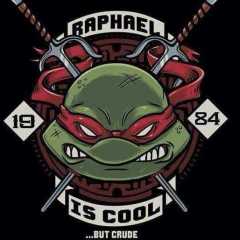
[SNES] Ninja Warriors
Sir Lord Alpyne replied to Sir Lord Alpyne's topic in Nintendo - Gaming Discussion's Topics
felt i needed to post tha long overdue 2nd part to this playthru, check tha 1st post, folks -
Defender of the Crown is a strategy game, set in England in the Middle Ages. It was Cinemaware's first game, and was originally released for the Commodore Amiga in 1986. it was ported to DOS, the NES, Atari ST, ZX Spectrum, Amstrad CPC, C64, Macintosh, the Apple IIGS and the CD-i. Following the death of the king, different factions are fighting for territorial control. The player assumes the role of a Saxon (Wilfred of Ivanhoe, Cedric of Rotherwood, Geoffrey Longsword or Wolfric the Wild) and tries to fight off the Norman hordes and wrestle for control of England. The player must fight for control of all territories, and potentially those controlled by other Saxons, if they have become antagonistic. Territories can also be won in the periodic jousting contests. From time to time the player may attempt to rescue a damsel in distress and can appeal for help from the legendary bandit Robin Hood. http://youtu.be/cvW6okgy4wA I love this game, was my first strategy game...
-
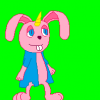
[Flash] Online Game&Watch
MugoUrth replied to Werewood's topic in Nintendo - Gaming Discussion's Topics
I wonder how often the sites update. -
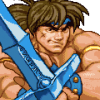
[Flash] Online Game&Watch
Werewood replied to Werewood's topic in Nintendo - Gaming Discussion's Topics
This Japanese web site, http://blog.goo.ne.jp/80-cafe , carries photographs and information of many rare/unknown/long-lost electronic handheld game machines: -
It is now not easy to find the real Game&Watch machines, even some are found, they are so expensive. So, this web site can let players to play many Flash version of Game&Watch games: The web site is: http://pica-pic.com/


